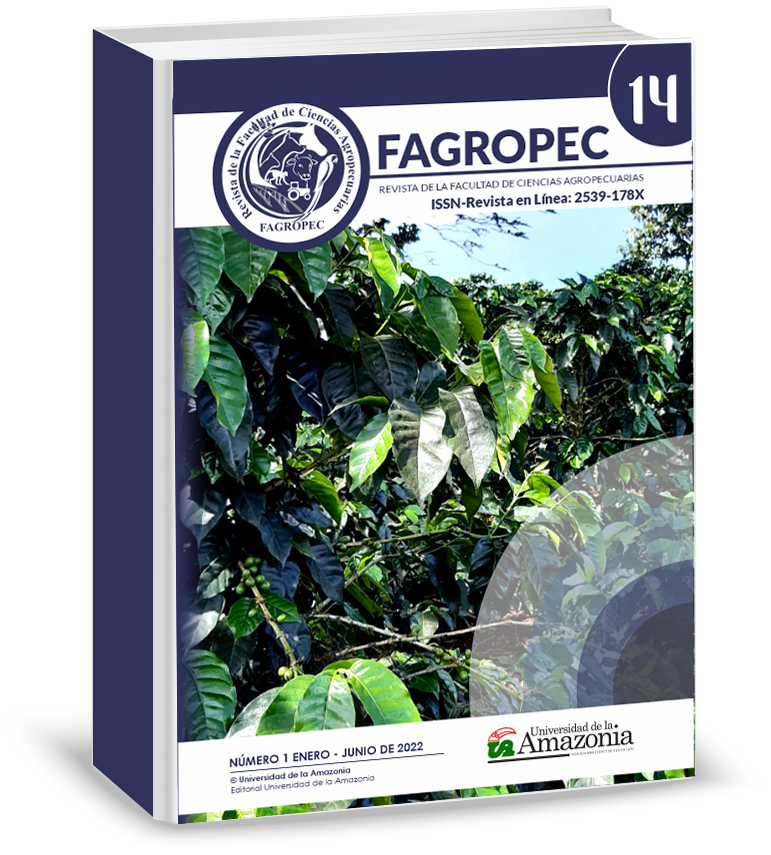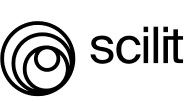Estimation of the leaf area in Castillo variety coffee with linear measurements and its relationship with yield
DOI:
https://doi.org/10.47847/fagropec.v14n1a1Keywords:
Linear regression, correlation, allometric measurements, branches and leavesAbstract
In Colombia, the goat production systems (PS) play an important role in the economy since it is evident that in some departments and rural areas of the country they work with large quantities, producing not only meat but also milk of this animal species. On the other hand, its contribution to the culture and gastronomic tradition of some sectors of the country is recognized. This is why the use of phytopharmaceuticals for the control of gastrointestinal nematodes is analyzed through a methodology of documentary and bibliographic review. This is seen as contributing to an improvement of the nutrition and well-being of goat PS, which provide the quality parameters and increased income for producers in the Colombian regions where this PS is becoming stronger.
Downloads
References
Agronet (2018). Red de información y comunicación del sector Agropecuario Colombiano. https://www.agronet.gov.co/estadistica/Paginas/home.aspx?cod=1
Arcila, J., Farfán, F., Moreno, A. Salazar, L., e Hincapié, E. (2007). Sistemas de producción de café en Colombia. Cenicafé.
Arcila, J., & Chaves, B. (1995). Desarrollo Foliar del cafeto en tres densidades de siembra. Cenicafé, 46 (1), 5-20.
https://biblioteca.cenicafe.org/jspui/bitstream/10778/692/1/arc046%2801%295-20.pdf
Buttaro, D., Rouphael, Y., Rivera, C.M., Colla, G., & Gonnella, M. (2015). Simple and accurate allometric model for leaf area estimation in Vitis vinifera L. genotypes. Photosynthetica, 53(3), 342-348. https://doi.org/10.1007/s11099-015-0117-2
Cabezas-Gutiérrez, M., Peña, F., Duarte, H.W., Colorado, J.F., & Lora-Silva, L. (2009). Área foliar en especies forestales. Actualidad & Divulgación Científica, 12(1), 121-130. https://revistas.udca.edu.co/index.php/ruadc/article/view/648/643
Charbonnier, F., Le Maire, G., Dreyer, E., Casanoves, F., Christina, M., Dauzat, J., Eitel, J., Vaast, P., Vierling, L. & Roupsard, O. (2013). Competition for light in heterogeneous canopies: Application of MAESTRA to a coffee (Coffea arabica L.) agroforestry system. Agricultural and Forest Meteorology, 181, 152-169. https://doi.org/10.1016/j.agrformet.2013.07.010
Charbonnier, F., Roupsard, O., Le Maire, G., Guillemot, J., Casanoves, F., Lacointe , A., Vaast , P., Allinne, C., Cambou , A., Clément, A., Defrenet, E., Duursma, R., Jarri, L., Jourdan, C., Khac, E., Leandro, P., Medlyn, B., Saint , L., Thaler , P., & Dreyer, E. (2017). Increased light-use efficiency sustains net primary productivity of shaded coffee plants in agroforestry system. Plant, Cell Environment, 40(8), 1592-1608. https://doi.org/10.1111/pce.12964
Secretaria de Agricultura. (2008). Consolidado Agropecuario de Nariño. Colombia: Universidad Sergio Arboleda
Coral Rojas, Y. E., Moncayo Rosero, J. K., Realpe Cabrera, I. A., & Mujica Betancourt, R. D. (2019). Oferta exportable del sector cafetero del Departamento de Nariño, (2010-2018). Visión Empresarial, (9), 135-150. https://doi.org/10.32645/13906852.876
De Lima, K., Gontijo, P., Furtini, A., Oliveira, H., & Lacerda, J. (2017). Effect of Magnesium on Gas Exchange and Photosynthetic Efficiency of Coffee Plants Grown under Different Light Levels. Agriculture, 7(10), 1-11. https://doi.org/10.3390/agriculture7100085
Del Aguila, K., Vallejos-Torres, G., Arévalo, L., & Becerra, A. (2018). Inoculación de Consorcios Micorrícicos Arbusculares en Coffea arabica, Variedad Caturra en la Región San Martín. Información tecnológica, 29(1), 137-146. https://dx.doi.org/10.4067/S0718-07642018000100137
Duarte-Canales, H. (2016). Efecto del riego en crecimiento y rendimiento del café (Coffea arabica L.) CATRENIC, Nicaragua, 2016. Ingeniería Agrícola, 6(4), 17-22. http://dx.doi.org/10.13140/RG.2.2.30118.73283
Favarin, J., Neto, D., García, A., Villa, N., & Vieira, M. (2002). Equções para a estimativa do índice de área foliar do cafeiro. Pesquisa agropecuária brasileira, 37(6), 769–773. https://doi.org/10.1590/S0100-204X2002000600005
Federación Nacional de Cafeteros de Colombia [FNC]. (2020, 14 de enero). Indicadores. https://federaciondecafeteros.org/wp/listado-noticias/produccion-de-cafe-de-colombiacerro-el-2019-en-148-millones-de-sacos/
Figueroa-Hernández, E., Pérez-Soto, F., y Godínez-Montoya, L. (2015). La Producción y el Consumo del Café. ECORFAN.
https://www.ecorfan.org/spain/libros/LIBRO_CAFE.pdf
Galindo, J. R., & Clavijo, J. (2007). Modelos alométricos para estimar el área de los foliolos de arveja (Pisum sativum L.). Ciencia y Tecnología Agropecuaria, 8(1), 37–43. https://doi.org/10.21930/rcta.vol8_num1_art:81
Gommers, C., Visser, E., Onge, K., Voesenek, L., & Pierik, R. (2013). Shade tolerance: when growing tall is not an option. Trends in Plant Science, 18(2), 65-71. https://doi.org/10.1016/j.tplants.2012.09.008
Gonzales, A. (2018). Image J una herramienta indispensable para medir el mundo biológico. Folium Relatos botánicos, (1), 1-15. https://www.researchgate.net/publication/328253430_Image_J_una_herramienta_indispensable_para_medir_el_mundo_biologico#fullTextFileContent
Jonckheere, I., Fleck, S., Nackaerts, K., Muys, B., Coppin, P., Weiss, M., & Baret, F. (2004). Methods for leaf area index determination. Part I. Theories, techniques ande instruments. Agricultural and Forest Meteorology, 121(1-2), 19 – 35.
https://doi.org/10.1016/j.agrformet.2003.08.027
Kumbhani, N., Kuvad, R., & Thaker, V. (2017). Development of linear model for leaf area measurement of two medicinally important plants: Helicteres isora L. and Vitex negundo L. Journal of Applied Biology & Biotechnology, 5(03), 057-060 https://doi.org/10.7324/JABB.2017.50310
Malone, S., Herbert, D., & Holshouser, D. 2002). Relationship between Leaf Area Index and yield in double-crop and full-season soybean systems. Journal of Economicl Entomology, 95(5), 945-951. https://doi.org/10.1093/jee/95.5.945
Marín-Garza, T., Gómez-Merino, F.C., Aguilar-Rivera, N., Murguía-Gonzáles, J., Trejo- Téllez, L.I., Pastelín-Solano, M.C., & Castañeda-Castro, O. (2018). Variaciones en área foliar y concentraciones de clorofilas y nutrimentos esenciales en hojas de café robusta (Coffea canephora P.) durante un ciclo anual. Agroproductividad, (11)4, 36-41.
https://doi.org/10.32854/agrop.v11i4.266
Montemayor Trejo, J. A., Munguía López, J., Segura Castruita, M. Ángel, Yescas Coronado, P., Orozco Vidal, J. A., & Woo Reza, J. L. (2017). La regresión lineal en la evaluación de variables de ingeniería de riego agrícola y del cultivo de maíz forrajero.
Acta Universitaria, 27(1), 40–44. https://doi.org/10.15174/au.2017.1255
Montoya R, E.C., Hernández A, J.D., Unigarro M, C.A., & Flórez R, C.P. (2017). Estimación del área foliar en café variedad castillo a libre exposición y su relación con la producción. Revista Cenicafé, 68(1), 55-61.
https://www.cenicafe.org/es/publications/5.Estimacion.pdf
Ocampo López, O. L., Castañeda Peláez, K., & Vélez Upegui, J. J. (2017). Caracterización de los ecotopos cafeteros colombianos en el Triángulo del Café. Perspectiva Geográfica, 22(1). https://doi.org/10.19053/01233769.6100
Plaza Avellán, L., Loor Solórzano, R., Guerrero Castillo, H., & Duicela Guambi, L. (2015). Caracterización fenotípica del germoplasma de Coffea canephora Pierre base para su mejoramiento en Ecuador. ESPAMCIENCIA, 6(1), 7-13.
http://revistasespam.espam.edu.ec/index.php/Revista_ESPAMCIENCIA/article/view/90
Quevedo García, E., Arévalo González, M. E., & Cancino Escalante, G. O. (2012). Determinación de un Modelo Matemático para la Estimación del Área Foliar y Peso Seco del Limbo de Prunus persica cv. Jarillo. Revista Facultad Nacional de Agronomía Medellín, 65(2). https://revistas.unal.edu.co/index.php/refame/article/view/36458
Ramírez, H., Jaramillo, A., & Peña, J. (2013). Gestión del riesgo agroclimático: vulnerabilidad y capacidad de adaptación del sistema de producción de café. En: Gast, F., Benavides, P., Sanz, J.R., Herrera, J.C., Ramírez, V.H., Cristancho, M.A., &
MARÍN, S.M. (Eds), Manual del cafetero colombiano Investigación y tecnología para la sostenibilidad en la de la caficultura, Tomo I (pp. 91-114). Bogotá D.C. Ed. Federación Nacional de Cafeteros de Colombia – Cenicafé.
Ramos V., L. J., & Criollo E., H. (2017). Physical and sensory quality of Coffea arabica L. variety Colombia variety, Nespresso AAA profile, in the Union, Nariño. Revista De Ciencias Agrícolas, 34(2), 83-97. https://doi.org/10.22267/rcia.173402.74
Rasband. W. (1997-2016). Image J.U.S. National Institutes of Health, Bethesda, Maryland, USA. https://imagej.nih.gov/ij
Rodríguez Larramendi, L.A., Guevara Hernández, F., Gómez Castro, H., Fonseca Flores, M., Gómez Castañeda, J.C., & Pinto Ruiz, R. (2016). Anatomía foliar relacionada con la ruta fotosintética en árboles de café (Coffea arabica L., var. Caturra Rojo) expuestos a diferentes niveles de radiación solar en la Sierra Maestra, Granma, Cuba. Acta Agronómica, 65(3), 248 - 254. https://doi.org/10.15446/acag.v65n3.46731
Sadeghian K, S., & Salamanca J, A. (2015). Micronutrientes en frutos y hojas de café. Cenicafé, 66(2), 73-87. https://www.cenicafe.org/es/publications/5.Micronutrientes.pdf
Sauceda-Acosta, C., Lugo-García, G., Villaseñor-Mir, H., Partida-Ruvalcaba, L. y Reyes- Olivas, A. (2015). Un método preciso para medir severidad de roya de la hoja (Puccinia triticina Eriksson) en trigo. Fitotec, 38(4), 427-434. http://www.scielo.org.mx/scielo.php?script=sci_arttext&pid=S0187-73802015000400011
Unigarro-Muñoz, C., Hernández-Arredondo, J., Montoya-Restrepo, E., Medina-Rivera, R., Ibarra-Ruales, L., Carmona-González, C., & Flórez-Ramos, C. (2015). Estimation of leaf area in coffee leaves (Coffea arabica L.) of the Castillo® variety. Bragantia, 74(4), 412-416. https://doi.org/10.1590/1678-4499.0026
Valbuena, N., Parraga, C., Linares, L., Ramos, J., & Junco, J. (2016). Modelos de estimación de área foliar a partir de observaciones morfológicas en Brachiaria brizantha cv. Toledo. Unelles de Ciencia y Tecnología, 34, 40-44.
http://revistas.unellez.edu.ve/.../248
Williams, L., & Martinson, T. (2003). Nondestructive leaf area estimation of 'Niagara' and 'De Chaunac' grapevines. Scientia Horticulturae, 98(4), 493–498. https://doi.org/10.1016/S0304-4238(03)00020-7
Zapata Arango, P. C., Andrade Castañeda, H. J., & Nieto Abril, Z. K. (2017). Comportamiento ecofisiológico del cafeto (Coffea arabica L.) cv. Castillo en sistemas agroforestales de Tibacuy, Cundinamarca. Revista U.D.C.A Actualidad & Divulgación Científica, 20(1), 61–70. https://doi.org/10.31910/rudca.v20.n1.2017.63
Zhang, L., & Pan, L. (2011). Allometric models for leaf area estimation across different leaf-age groups of evergreen broadleaved trees in a subtropical forest. Photosynthetica, 49(2), 219-226. https://doi.org/10.1007/s11099-011-0027-x
Downloads
Published
Issue
Section
License

This work is licensed under a Creative Commons Attribution-NonCommercial-ShareAlike 4.0 International License.
























